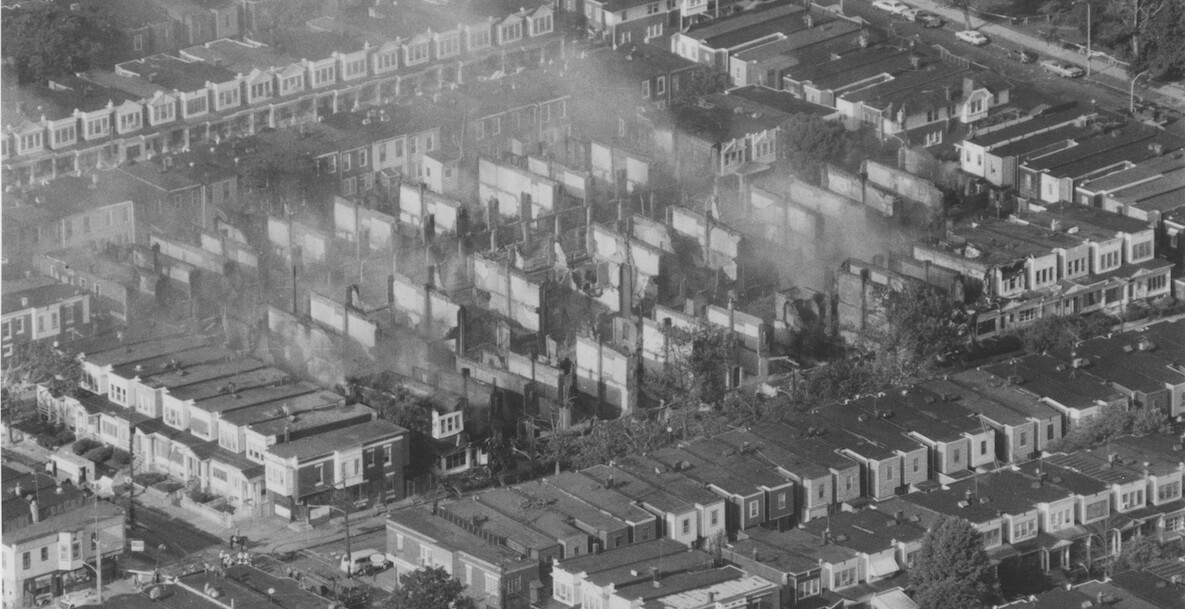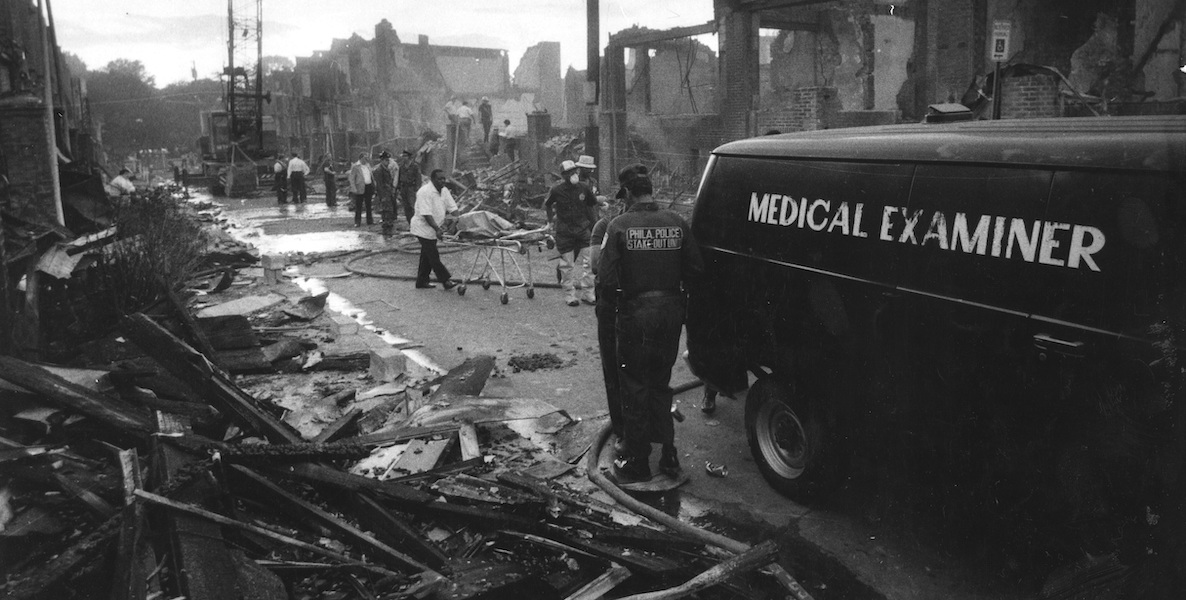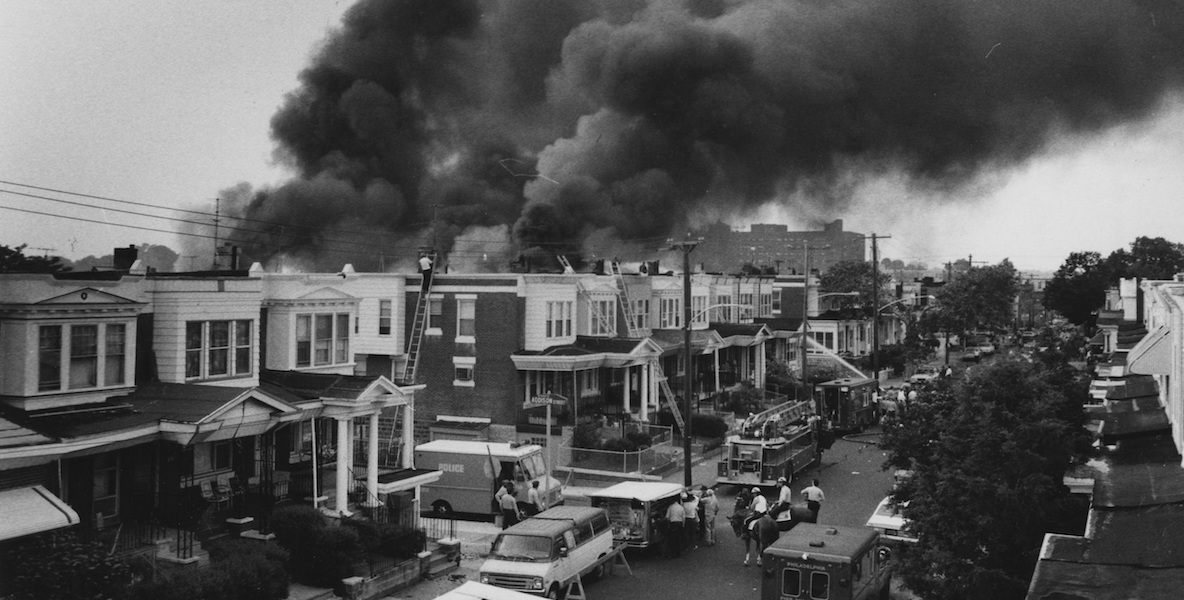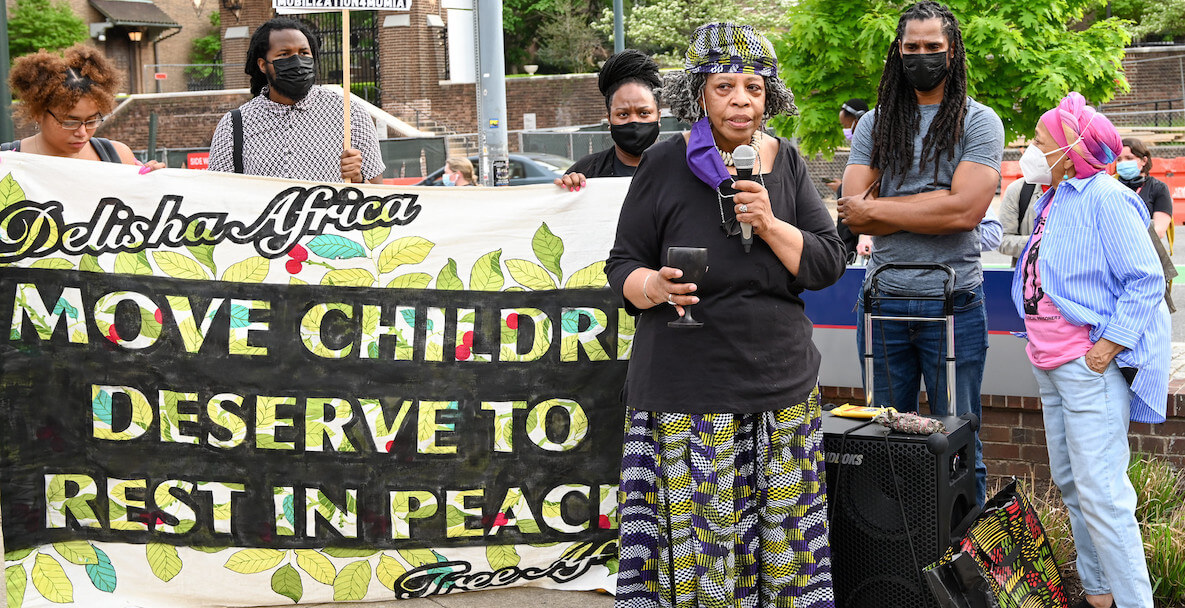“To land on the moon is to make news which transcends form: the faster the word gets out, the better,” legendary Esquire magazine editor Harold Hayes once wrote. “But once established, facts move from the simple to the complex, begging interpretation of a thousand varieties.”
I thought of Hayes’ nearly 50-year-old “new journalism” argument when I hunkered down to read the recently released 217-page investigative report by the prestigious Black-owned Tucker Law Group on the “demonstrative display of MOVE remains at the Penn Museum and Princeton University.”
You’ll recall the firestorm that erupted last spring when it came to light that, first, two University of Pennsylvania physical anthropologists had seemingly been passing around MOVE bombing remains for the last 36 years (said bones had been featured in a Princeton online course taught by one of the anthropologists); and, second, that the city had likewise long botched its handling of remains, resulting in the firing of then-Health Commissioner Tom Farley.
Ten days after the bombing, Louise James, the owner of the MOVE house that had just been blown up by the city, received a bill from the City of Philadelphia for the demolition of the very house it had just firebombed. Seriously.
Now comes the independent investigation into the first of those tragic blunders. It is commissioned by Penn, and, along with attorney Joseph Tucker, is helmed by Carl Singley, arguably the most credible person in Philadelphia to weigh in on MOVE and the history of race relations in Philadelphia and the country.
He was a freedom rider in the deep South during the perilous Freedom Summer of the civil rights movement before going on to become the dean of Temple Law School. He was also chief counsel to the original MOVE Commission, which eviscerated the city’s handling of the case, calling the deaths of the five children that day “unjustifiable homicide” and finding then-Mayor Wilson Goode “grossly negligent,” while at the same time painting MOVE as a de facto terrorist organization that held a working class Black neighborhood hostage, far removed from the “social justice organization” many have now come to see it as.
As that first report noted:
MOVE’s deliberate use of terror included the intentional violation of the basic rights of those living in the Osage Avenue neighborhood. This was achieved by: both verbal and physical assaults upon targeted individuals living in the neighborhood; the periodic broadcast over outdoor loudspeakers of profane harangues against the government and threats of violence against public officials; the public acclaiming by MOVE of the 1978 death of Officer Ramp, and the repeated threat that, if the police come to 6221 Osage Avenue, ‘we’ll put a bullet in your motherfucking heads’; the prominent fortification of an ordinary row house; the aggressive display of a weapon by a hooded man at mid-day in a normally peaceful neighborhood; the compelling domination of the neighborhood by MOVE’s rooftop bunker, which, by itself, became a commanding public notice of imminent confrontation.
Now comes this latest MOVE report, and it’s a stunning document—notable for three things we’ll dive into: its framing of the current controversy in historical context (in contrast to so much of the simplistic daily coverage); the breadth of its reporting; and its bold recommendations as to how Penn, moving forward, can guard against future escapades into what has come to be called “scientific racism,” a phenomenon we’ll get to.
First, let’s look at context
The Inquirer headline on last week’s story upon the release of the report was both accurate and terribly incomplete: “Penn report on mishandling of MOVE remains faults two scholars for ‘gross insensitivity.’”
The report does, in fact, find that the anthropologists in question, now-retired Dr. Alan Mann and Dr. Janet Monge, exhibited “extremely poor judgment and gross insensitivity,” but that neither had violated any “professional, ethical or legal standards,” in part because neither the Museum nor the practice of physical anthropology had any policies in place for how to treat unidentified remains.
That, I guess, is the “news” here—but it’s a stunningly shortsighted way to recount what’s actually gone on. The report begins by correcting the fog-of-war reporting that has come to characterize so much of the public narrative dealing with the MOVE remains: “Much of the critical commentaries from a congeries of sources about this controversy are based, in part, on three inaccurate factual inaccuracies,” the report reads. “(1) that the remains used in the video were indisputably those of a specific MOVE child killed in the bombing, (2) that the remains of a second MOVE child were housed at the museum, and (3) no effort was ever made to identify and return any of those remains to MOVE family members.”
So the report walks us through the facts of what happened in a way that corrects the too often confusing public record. But it also does much more than that. It provides both important background as to why the story has played out publicly as it has and big picture context for the story as a whole.
MORE COVERAGE OF THE MOVE BOMBING IN PHILADELPHIA
Few outside the hallowed halls of academe know, for example, the full extent of what’s come to be known as “scientific racism,” and the role of anthropology in it.
Turns out, there has been a “repatriation of human remains” movement in recent years, the report holds, demanding an “acknowledgment that many universities and museums were complicit in creating the scientific justifications for slavery resulting in the dehumanization of Black people in life and the desecration of their bodies after their death. It also raises the moral and human dignity implications of the continuing possession and use of human remains by universities and museums, of which the Samuel Morton Cranial Collection at the Museum is emblematic.”
The MOVE remains that were in the possession of doctors Mann and Monge were never formally a part of the Penn Museum or University, but it’s easy to see nonetheless how the presence of MOVE remains among all the other ancient skulls of enslaved people—procured by grave robbers—at the Museum fits neatly into the narrative of scientific racism, as Penn anthropology professor Deborah Thomas has written about so movingly in The History of Anthropology Review:
As an anthropologist who has been committed to using my research and my creative work to bear witness, not only to the forms of racism and violence that permeate our lives, but also to the extraordinary ways we continue to make life in the face of this violence, I believe anthropology should get out of the body business. The filming of Tree Africa’s [presumed] remains for an ‘Adventure in Forensic Anthropology’ course, with the Morton Collection in the background of the scene, manifests the enduring violence of human remains collecting. There is no potential future scientific insight that can sufficiently justify the maintenance of human remains collections; there is no research (beyond that which is geared toward repatriation, or that which is descendent-community led) that can satisfactorily transform the white supremacist rationale that originally legitimated grave-robbing and the experimentation on Black and Indigenous bodies. Most importantly, there is no context in which the individuals currently housed in ethnographic museums could have given informed consent to be there.
This context answers the question, Why does all this matter? Far from an isolated case of the poor judgment by a couple of anthropologists, the Tucker Law Group report identifies a history of erasure of Black bodies and Black dignity when it has come to notions of scientific progress. But—and here’s where things get messily complex—the report also provides a road map for how this became a story in the first place.
Paul Wolff Mitchell is a white anthropology graduate student at Penn whose written critiques of the Morton collection “instigated” much of the spring’s media coverage on the Penn Museum’s MOVE remains. Mitchell is a fascinating character—smart, savvy and self-assured. (One source close to the investigation reports that Wolff is not his given middle name, but that he added it so as not to be confused with the line of Paul Mitchell hair care products should he one day become famous.)
Mitchell was once a protege of Dr. Monge’s, and the two had a falling out. The report raises questions as to how much of Mitchell’s objection to the handling of MOVE remains is a principled stand for racial justice in the field of anthropology and how much of it is driven by personal animus and ambition.
If you’re given to scoffing at notions like “systemic racism,” it’s awfully hard to do that when reading reports like this.
When asked by the report’s investigators whether he’d threatened Monge during a tense meeting, as alleged, Mitchell said he’d be more likely to “slowly poison” an adversary than physically assault them. “When asked whether that included leaking stories to the media, he agreed that it did,” the report reads. “In a follow-up questionnaire to his previous interview, Mitchell was asked whether he had told anyone that he wanted Monge’s job and he stated: ‘I do not recall ever having done so, but it is plausible that I did…I would have been happy to have Janet’s job at some point.’”
Why is this context so crucial? Because we’ve had some inaccurate reporting stemming, at least in part, from a likely source who may have had conflicts news consumers should have known about. If, as the report concludes, Mitchell’s fingerprints were all over much of the coverage of the Penn Museum’s MOVE remains imbroglio last spring, it’s telling that the Tucker Law Group report is the first time we’ve fully been told about it.
I’ve been reading about MOVE ever since that frightful 1985 day that Osage Avenue went up in flames, and yet there is contextual reporting in the TLG report that is news to me. To wit:
After the fire was brought under control at 11:41 p.m. on May 13, 1985, representatives of the Medical Examiner’s Office refused to go to the Osage Avenue disaster scene until after the first body was discovered, which was late in the afternoon of May 14, 1985. By the time they arrived, the City had begun using a clam shell crane to dig up debris and body parts which resulted in the dismemberment and commingling of human body parts along with animal body parts. More importantly, these excavation methods destroyed important physical and medical evidence. Even after arriving on the scene, the pathologists in charge failed to coordinate and control the actions of the various agencies that were searching for evidence and other possible victims. These early incompetent, insensitive and unconscionable decisions by the Medical Examiner’s Office and the City laid the groundwork for the instant controversy over the remains and this investigation.
If you’re given to scoffing at notions like “systemic racism,” it’s awfully hard to do that when reading reports like this. How about this one: Just 10 days after the bombing, Louise James, the owner of the MOVE house and sister of MOVE leader John Africa, who had just been blown up by the city, received a bill from the City of Philadelphia for the demolition of the very house it had just firebombed. Seriously.
Most important are the recommendations offered by the TLG report
Among its provocative calls are for Penn to directly engage the issue of scientific racism by creating a new full-time position for a bio-anthropologist/archaeologist who is not only an expert in the analysis of human remains, but also has demonstrated “a record of advocacy for Black and Indigenous people and in repatriation requests.”
And, most interestingly, the report calls for Penn to turn its attention to the city that is its home, by urging the university to establish a permanent installation dedicated to the MOVE bombing on campus.
Our investigation revealed that there is very little contemporary understanding of one of the most horrific events in Philadelphia history, which included not only the killing of eleven people, but also the destruction of 61 homes and permanent dislocation and disruption of the lives of over 250 residents…there is no place that memorializes, educates and creates a balanced perspective on this event. While the University bears no responsibility for the events of May 13, 1985, it has the unique opportunity, as an elite city institution, to provide a vitally needed public service.”
But perhaps the report’s most important recommendation is one which serves to illustrate, in very practical terms, the real benefits true diversity and inclusion can have for major 21st Century institutions. While calling for the hiring of a chief diversity officer for the Penn Museum, the report notes that, with the exception of its new director, the Museum has no African Americans in its 40 upper-management positions.
Think of it: If there had been one person who looked like Carl Singley in the upper echelon of the Penn Museum during any one of the 10 (!) times witnesses testified to Monge showing off the MOVE remains, wouldn’t it have been more likely that someone might have said, Are you out of your mind? Don’t you realize what those bones symbolize to a whole lotta folks in Philadelphia?
Our recent history is replete with reports that are commissioned during controversial times that end up doing little more than serving a short-term public relations need. There’s a press release, talk of reform, and then the report sits on a shelf somewhere. Here’s hoping that Penn takes the TLG report’s invitation to seize the moment and make change, even where it has not been culpable. The institution and Philadelphia will both be better for it.

RELATED
Header photo by Joe Piette / Flickr






